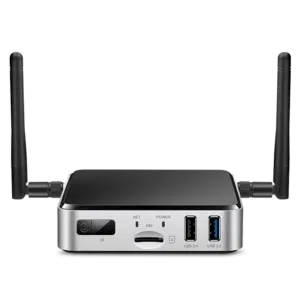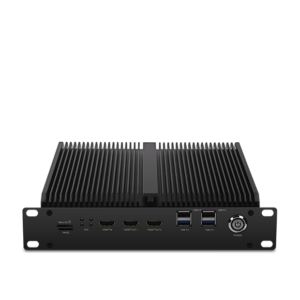A Extensive Guide to Deploying AI on Edge Devices
A Extensive Guide to Deploying AI on Edge Devices
Blog Article
AI on Edge Devices vs. Cloud AI: Professionals and Cons
Real-World Applications of AI on Edge Units
Synthetic intelligence (AI) is no more confined to the world of big, centralized information centers. As a result of developments in engineering, edge units today perform an integral position in deploying AI immediately wherever information is generated. But what does AI on edge units mean, and how come it making this type of buzz? Here, we'll investigate how embedded edge ai works in real life through side products and reveal their wide variety of realistic applications.

What's AI on Edge Products?
AI on side products identifies deploying synthetic intelligence algorithms directly on units like smartphones, cameras, drones, or IoT sensors. These devices do not want usage of centralized servers for handling information; as an alternative, they accomplish evaluation and choices locally, making the method faster, better, and frequently more secure.
The "edge" here merely describes computing done near or at the source of knowledge generation, instead of depending on the cloud. This shift is driven by the requirements for real-time knowledge running and the requirement to reduce latency, improve privacy, and lower bandwidth usage.
Key Real-World Applications of Edge AI
1. Clever Detective
AI-powered cameras equipped with skin acceptance, motion detection, and anomaly recognition are transforming security systems. Edge devices in this domain may analyze movie streams in real-time to identify suspicious activities, remove fake alarms, and improve community safety. As an example, AI methods may discover strange actions and attentive authorities instantly without the necessity to send movie data to a main host for analysis.
2. Healthcare Tracking
Wearable devices and portable medical equipment are leveraging m.2 ai accelerator for controlling wellness data more efficiently. Edge-based AI in units like health trackers and smartwatches monitors users' vitals, such as for example heartbeat, oxygen levels, or blood pressure, in real-time. These techniques analyze information locally and offer immediate feedback, paving the way for quicker treatment all through emergencies.
Beyond wearables, advanced medical imaging devices equipped with on-device AI can identify signals of diseases like cancer, permitting earlier diagnoses even in rural parts without net connectivity.
3. Autonomous Vehicles
Self-driving cars are among the absolute most well-known examples of side AI in action. With sensors, cameras, and LiDAR systems offering as knowledge resources, AI computations take place onboard these cars to create split-second decisions. From finding pedestrians and limitations to moving city roads, edge AI assures that the automobile runs reliably and efficiently. The real-time control capability of side devices eliminates the dependence on high-latency cloud systems, ensuring security in life-critical scenarios.
4. Retail Analytics
Edge devices in retail environments are supporting firms analyze consumer behavior. Intelligent shelves and AI-equipped cameras can identify customer preferences, monitor inventory, and actually customize in-store experiences in real time. The data generated from these units helps suppliers produce educated choices, increase customer satisfaction, and improve supply management.

5. Commercial IoT
Factories and commercial plants are adopting side AI to revolutionize their tracking and automation processes. AI-powered devices on machinery find potential flaws well before they lead to expensive failures. Predictive preservation driven by side AI reduces downtime, increases production, and guarantees protection on the production floor.
6. Customized Activities in Customer Units
Your smartphone is an excellent exemplory case of how side AI personalizes individual experiences. Features such as voice personnel, flexible camera options, and on-device language translation use real-time AI to react to individual wants without giving sensitive and painful knowledge to external servers. That fosters equally ease and solitude for the finish user.
The Growing Impact of Edge AI
The ownership of AI on side products continues to spike, pushed by industries' raising demand for low-latency, real-time research, and greater information privacy. Their programs are reshaping industries which range from healthcare and automotive to community protection and retail. By placing AI's energy nearer to wherever knowledge is created, edge devices are not just improving performance but in addition showing the limitless possible of development in today's connected world. Report this page